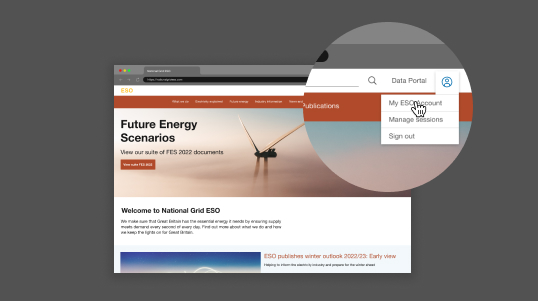Under the RIIO-2 business plan, the ESO has transformational ambitions which deliver significant benefits, many of which are dependent on enhanced balancing capabilities in our Electricity National Control Centre (ENCC). With the rapid pace of change across the energy industry, we are aware that we must ensure that our approach to planning and delivery of our balancing capability is flexible and can adapt in future to the evolving needs of our customers.
This challenge led us to the decision to step-back and review our strategy, roadmaps, and delivery plans, through the strategic review.
We undertook a strategic review of the systems used to support our balancing capability between April and May 2022. Full details of the engagement undertaken and the outputs of the engagement can be found further down on this page.
Our strategic review was undertaken collaboratively to ensure that our plans and delivery roadmaps meet our RIIO-2 strategic objectives, minimise balancing costs, deliver consumer benefits and create a foundation for future market changes and reform.
We were keen to receive views and input from a wide range of stakeholders, to ensure that further investment will enable us to:
- Meet our net-zero carbon operability ambition.
- Continue to remove barriers to entry for energy providers and encourage participation in the market.
- Operate within increasingly challenging system conditions.
- Efficiently and effectively transition between our current and future balancing capability.
Download the Balancing Strategic Review Report
Download the Stakeholder Feedback
We are committed to providing greater transparency of our work following the balancing strategic review. We are pleased to publish the first update, in this update you will find our objectives for the last period, what we delivered and what we will do next.
Introducing our strategic review
Our understanding of the complexity and scale of the transition from existing to future balancing capability has developed greatly since we submitted our first RIIO-2 business plan, which is why we are taking this step to assess options. There are choices in how we transform and we want to work transparently and collaboratively to find better ways to deliver the systems transformation required. Options come with different costs and benefits – we want to work efficiently, effectively and meet the goals of our customers and the Control Room and create an industry endorsed plan.
Strategic review webinar
Thank you to all those that have been taking part and engaging in our recent sessions. Over the past few weeks, we have received great input so far from a wide range of industry participants. Here we share our latest webinar which reviews all the balancing challenges and issues raised, detailing the initiatives that are incoming to overcome these. In this webinar we also provided a transparent view of our known industry and operational needs that will enable Net-zero operability targets, and an initial look at a roadmap for how this could be delivered.
Strategic review workshop
We held an in-person workshop at our Wokingham office to co-create and prioritise a Balancing Capability Roadmap. Stakeholders took part in different activities to help us shape our future balancing capabilities and visited our control room to see our balancing capability system in action. The video takes you through the structure of the day and activities the group went through, which included understanding the capabilities, mapping these to our strategic objectives and providing an industry view on the prioritisation. We have a copy of the outputs of the session available for you to view below. Thanks to all that attended, it was a great day with plenty of insight into industry needs and prioritises that will feed into future sessions.
Developing the proposed roadmap
As part of our strategic review we held another in-person event in London where we welcomed stakeholders to review and provide feedback on the proposed balancing capability roadmap. This was based on feedback received from stakeholders during the previous engagement. We worked collaboratively on exploring the costs, risks and benefits associated with the proposed roadmap, with stakeholder discussions and additional comments captured through interactive sessions. The following day we held this webinar which provided a high level run through of all the topics covered at the in-person event. To help stakeholders understand the discussion we also captured the outputs on our mural board available here.
Strategic review feedback
In our final webinars we recapped the journey of the last 2 months engagement sessions and validating that your priorities and requirements have been captured accurately in the proposed roadmap. The session also pulled together feedback from previous sessions to propose a plan for how we engage on this topic moving forward following this review. Thank you to everyone who has provided feedback and input to the review, it has been crucial in developing a roadmap for transforming our balancing capability as a whole industry. As mentioned in the session we want to keep this as a continual conversation and look forward to seeing you all at our future sessions where we update you on the progress that has been made.
Read our letter to industry.
A full list of all questions and answers sent in to the strategic review.
Contact the programme team









